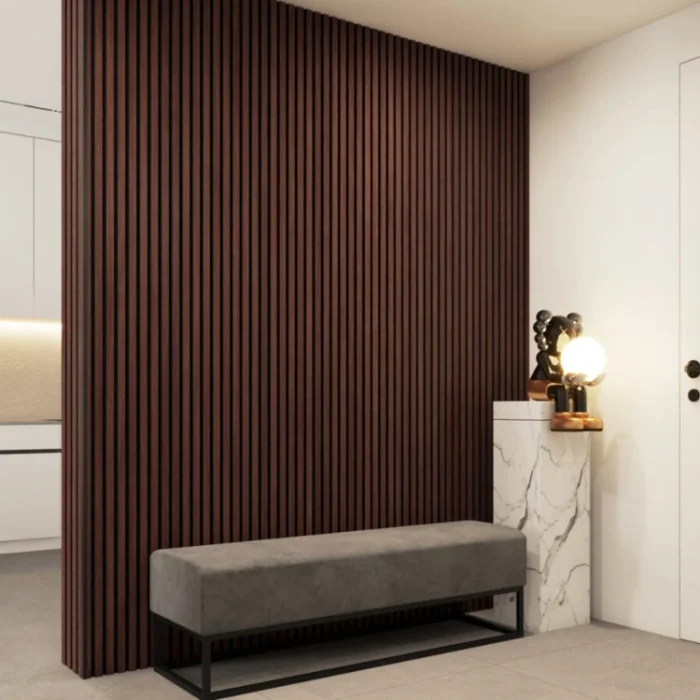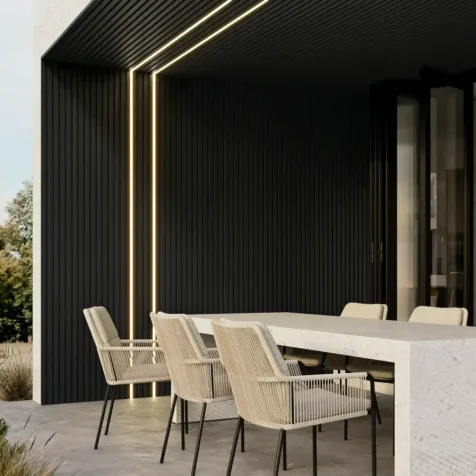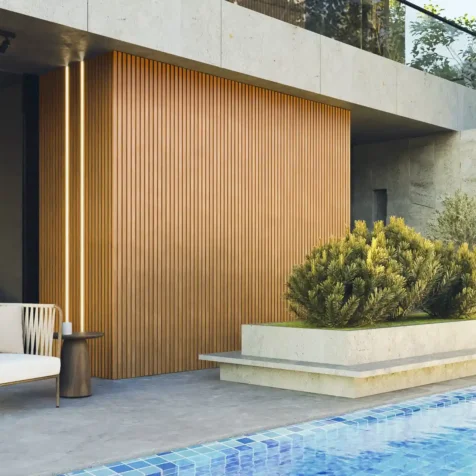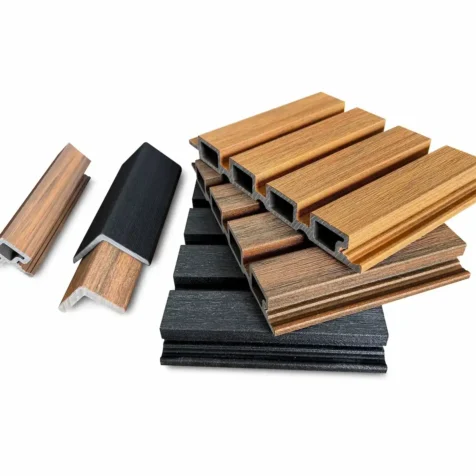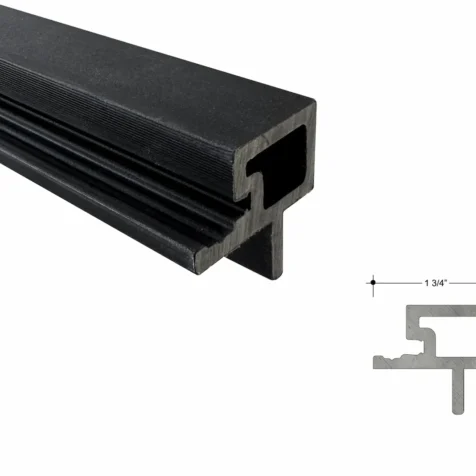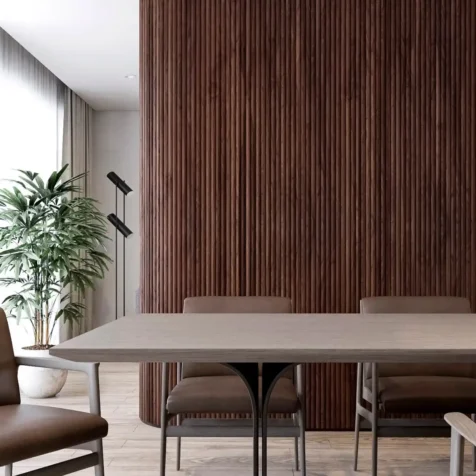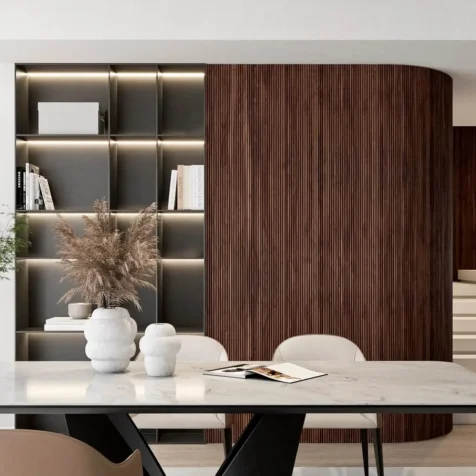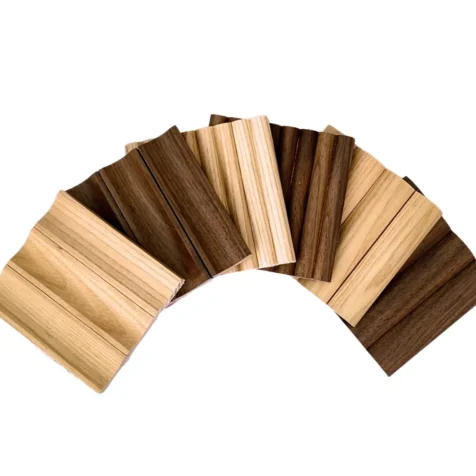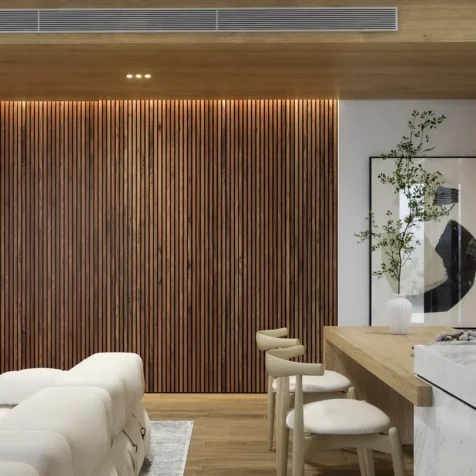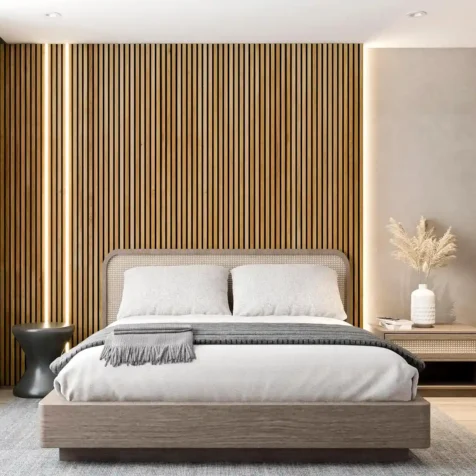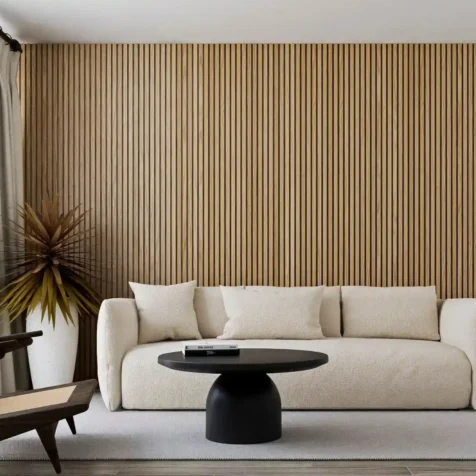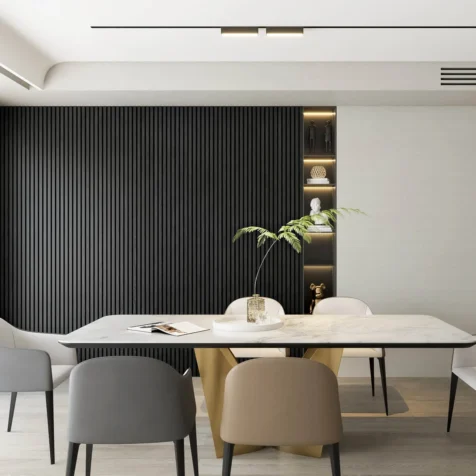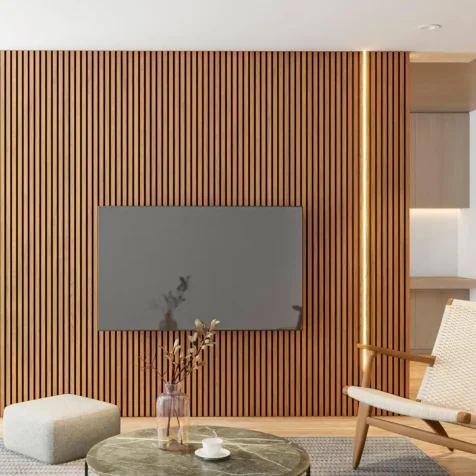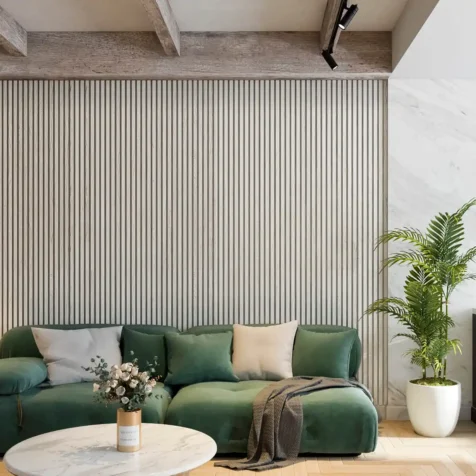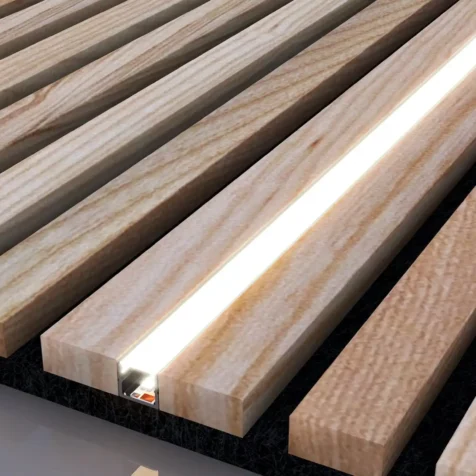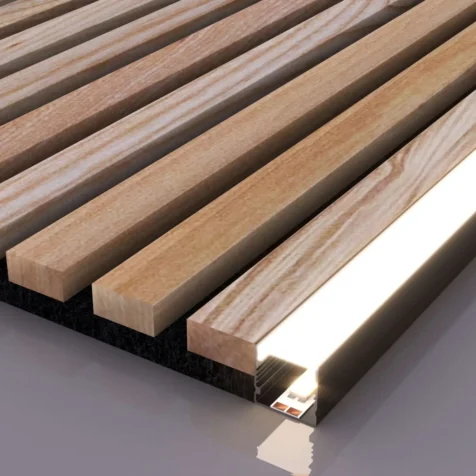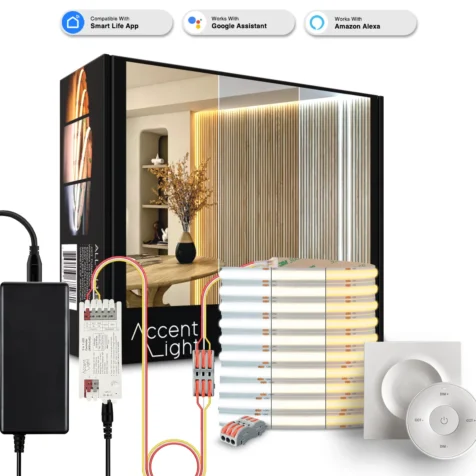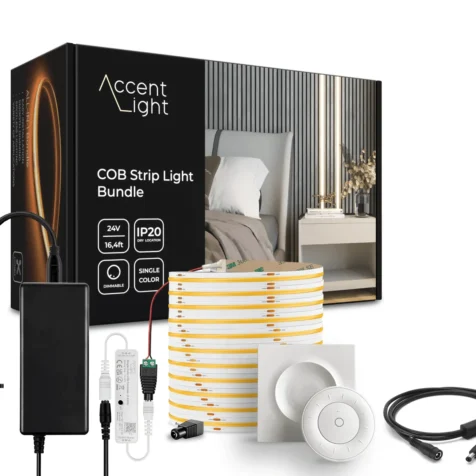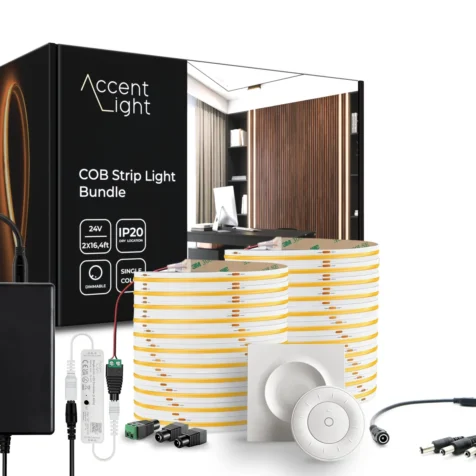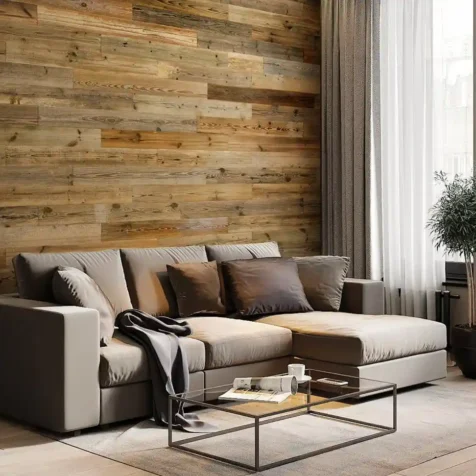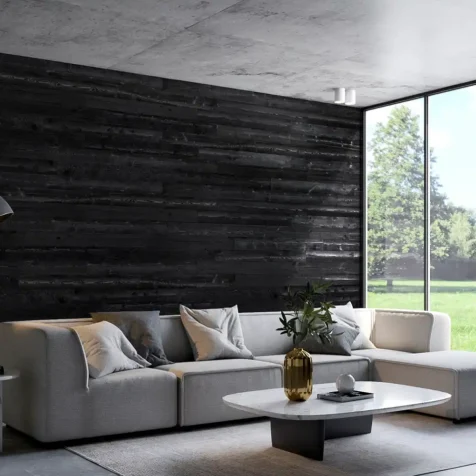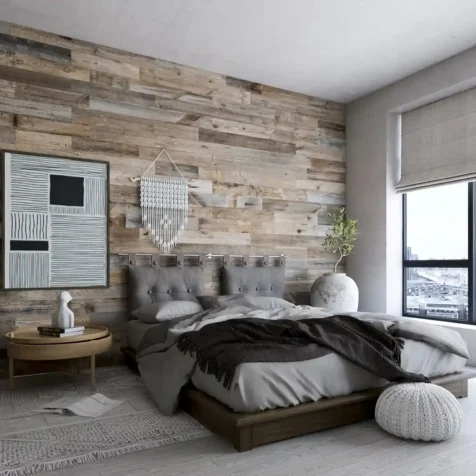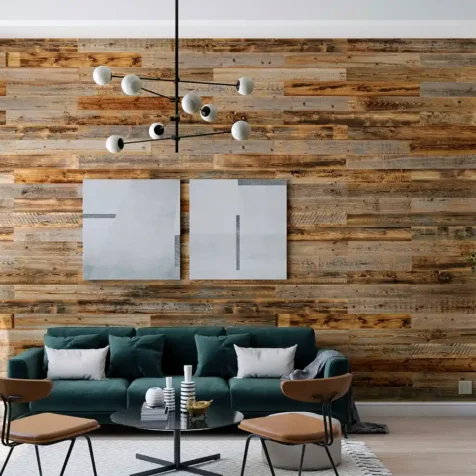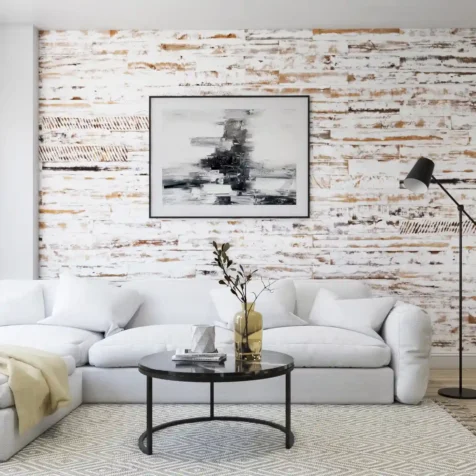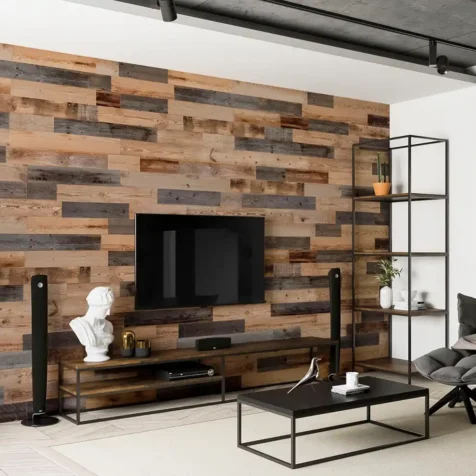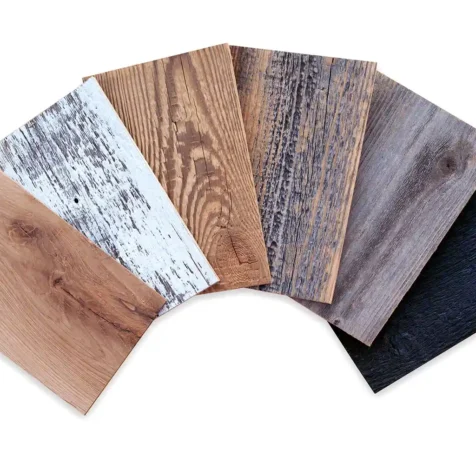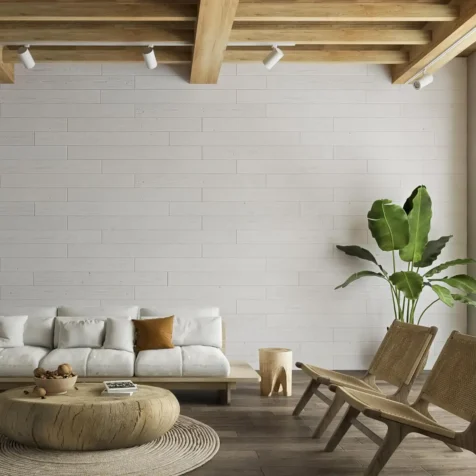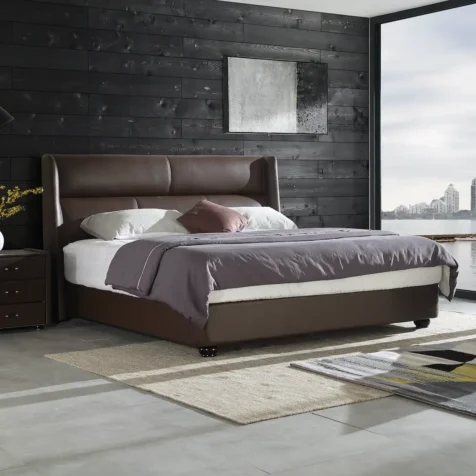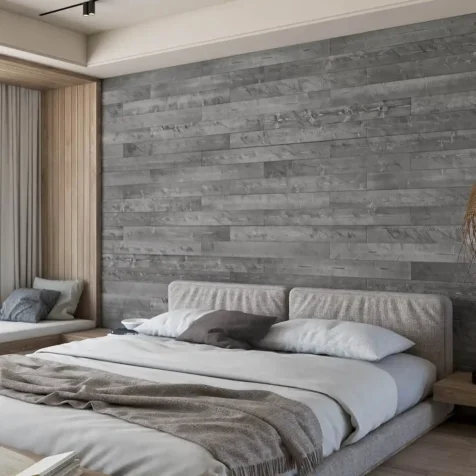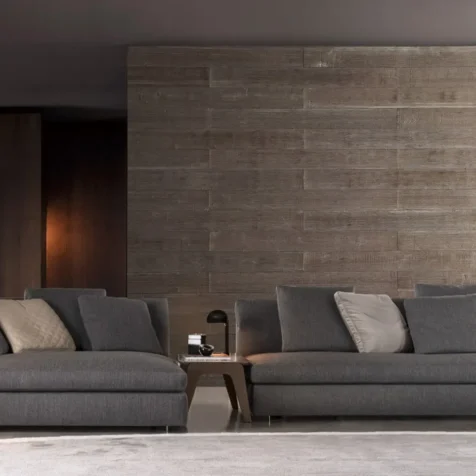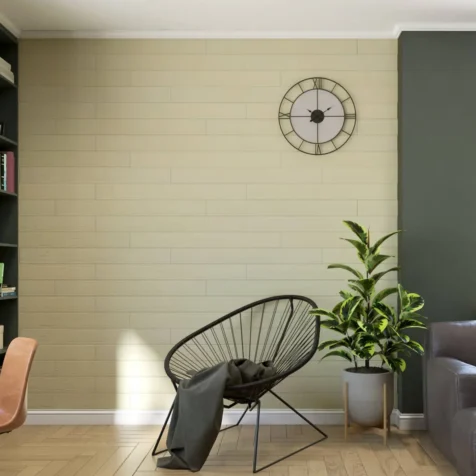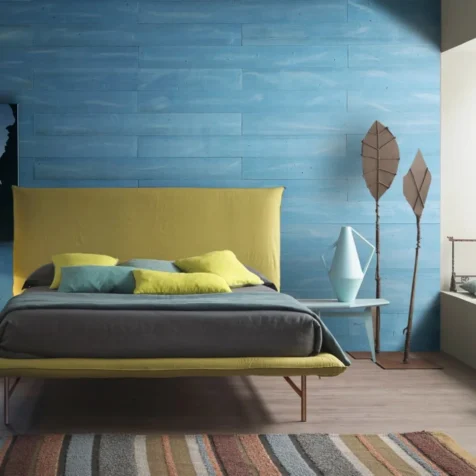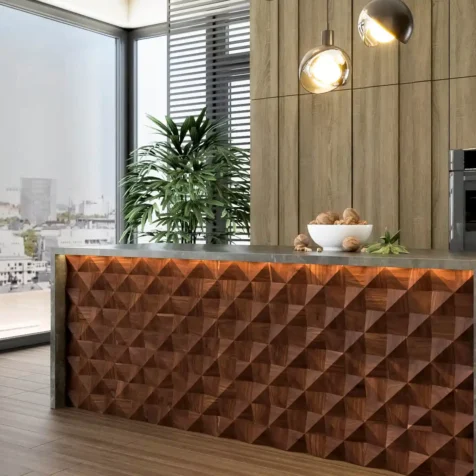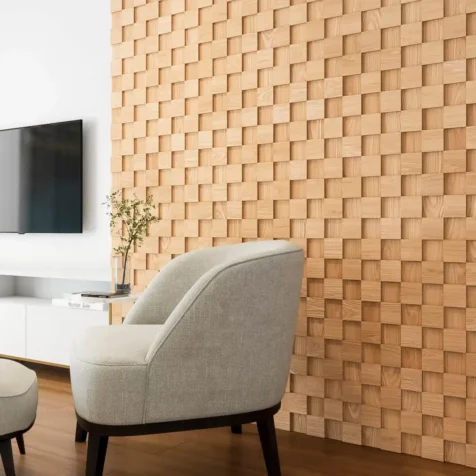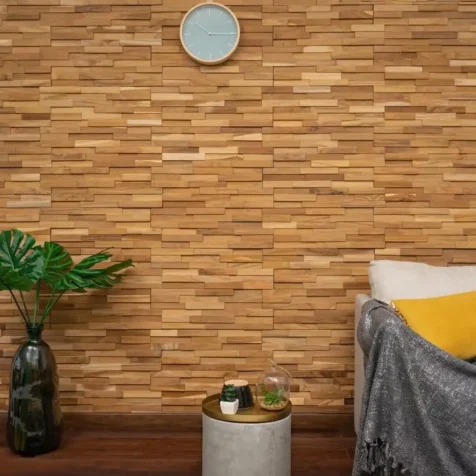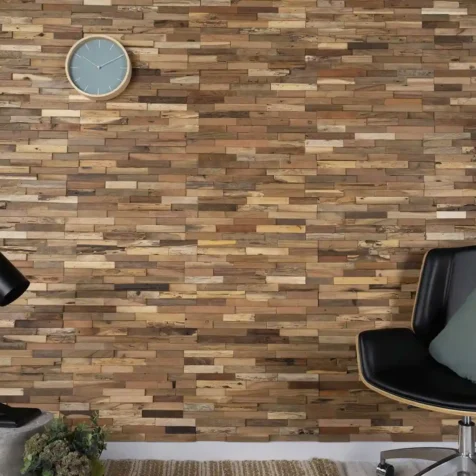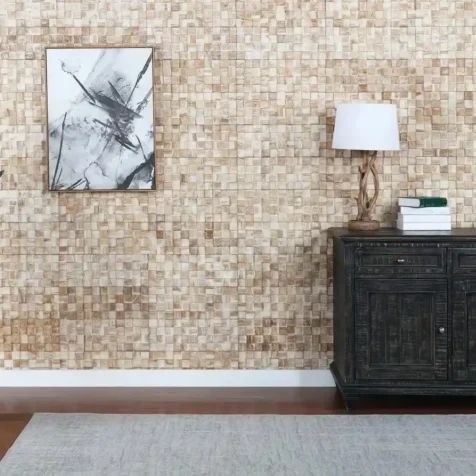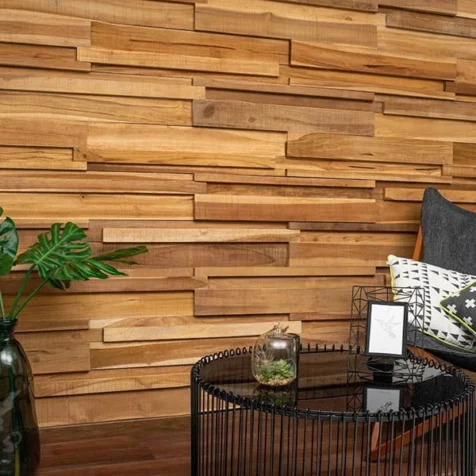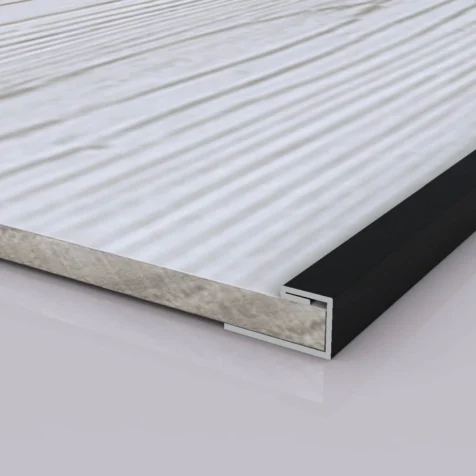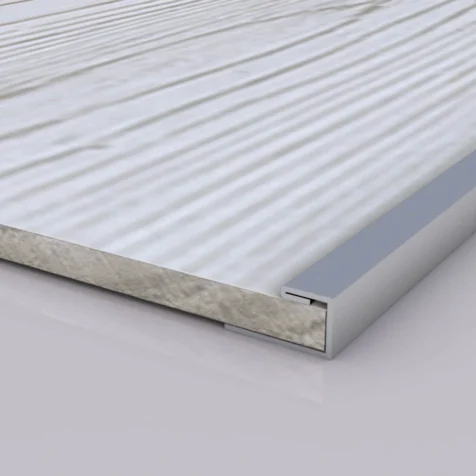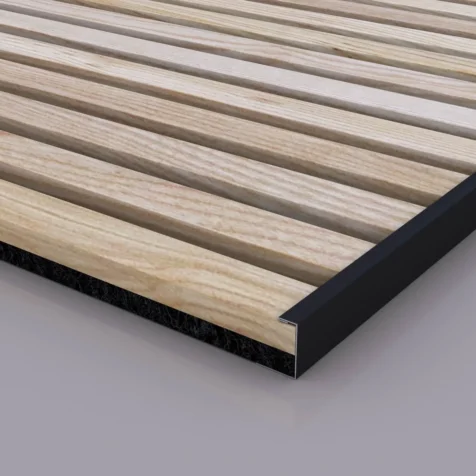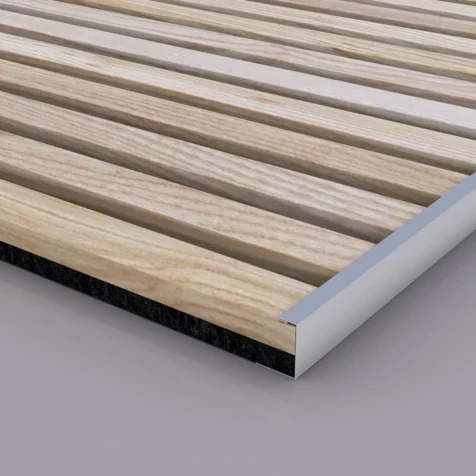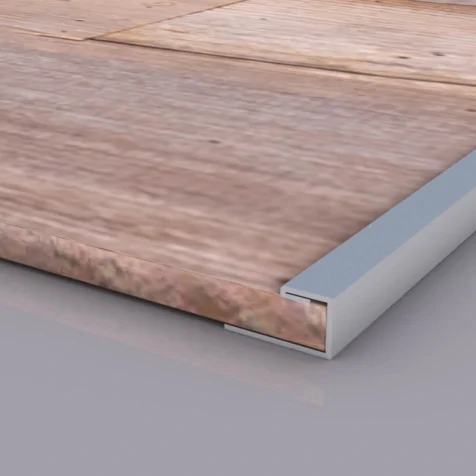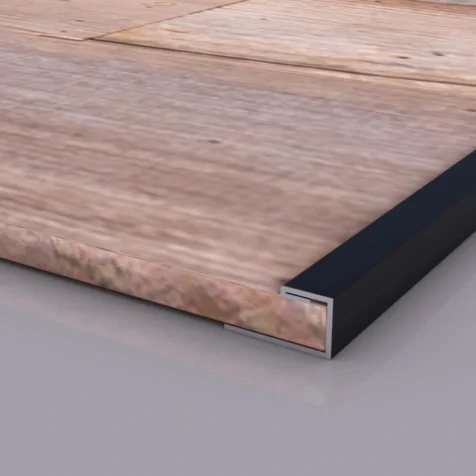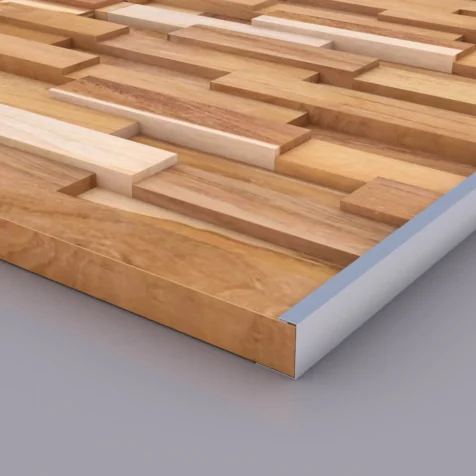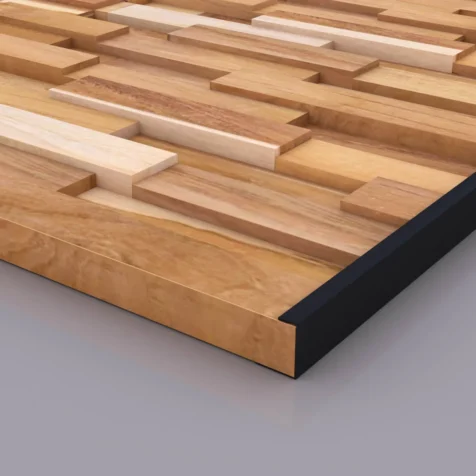Wood Paneling vs Drywall: Which One’s Right For Your Walls?
Facing a wall remodel or new interior build-out? One of the most fundamental choices you’ll make is between wood paneling vs drywall. Both are widely used wall finishes, but they serve different aesthetic, practical, and financial needs.
This guide breaks down their core differences in installation, cost, design, sound insulation, durability, and room suitability. If you’re deciding between wood paneling vs drywall for your home, studio, or office space, this is your go-to breakdown.
Understanding the Basics
1. What Is Drywall?
Drywall, or gypsum board, is a panel made from calcium sulfate dihydrate (gypsum), typically pressed between two thick sheets of paper. It’s used to build interior walls and ceilings and is prized for its affordability and smooth finish.
Drywall sheets are mounted to wall studs, then taped, mudded, and sanded to create a seamless surface. It’s the go-to for modern construction because it’s easy to paint or texture, and suitable for a wide range of applications.
- Advantages:
- Cost-effective material
- Paintable and adaptable to decor changes
- Fire-resistant when using rated boards
- Easily repaired when damaged
- Limitations:
- Susceptible to cracks, dents, and moisture damage
- Installation is labor-intensive and messy
- Finishing requires multiple steps and drying time
2. What Is Wood Paneling?
Wood paneling includes any wall covering made from natural or engineered wood products. This includes slat wall systems, 3D panels, reclaimed barnwood, and peel-and-stick designs.
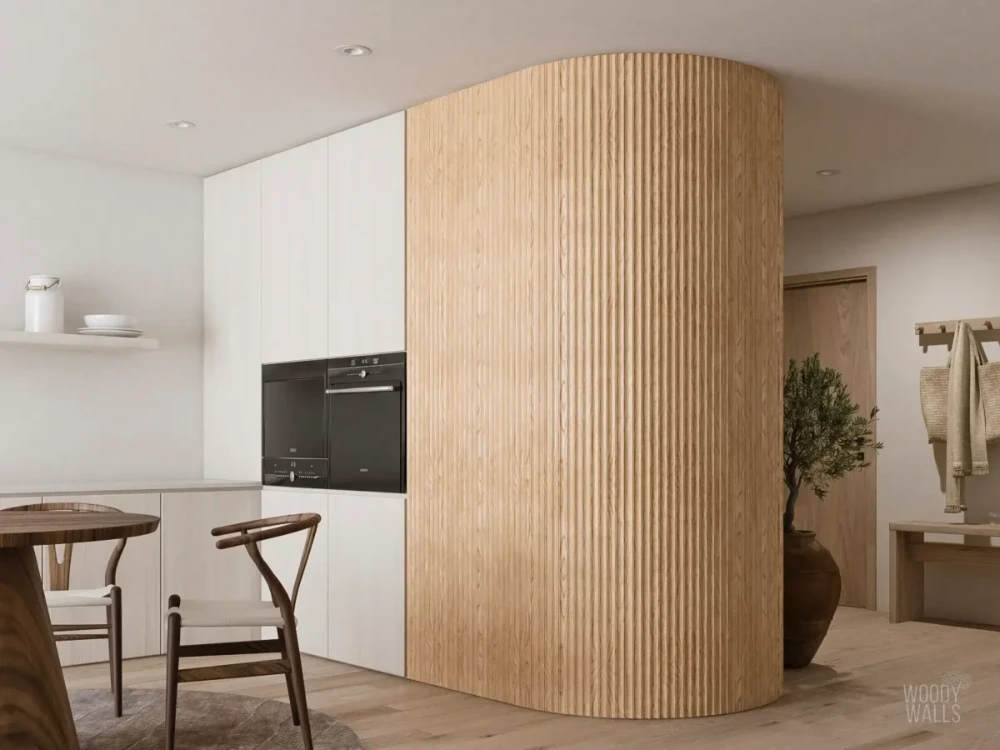
Unlike traditional sheet-based wall finishes, paneling brings depth, character, and dimension to a space. Panels may be mounted directly to the wall or suspended over battens, making them suitable for retrofitting older surfaces or adding architectural style to modern homes between wood paneling vs drywall.
- Types of Wood Paneling:
- Solid Wood Slats: Durable, high-end feel, ideal for full or partial wall features
- Acoustic Slat Panels: Engineered for sound absorption, perfect for media rooms and offices
- Peel-and-Stick Panels: Designed for quick, glue-free DIY upgrades
- Reclaimed Wood (Barnwood): Eco-friendly and rustic with aged character
- Exterior Wood Paneling: Treated for UV and moisture resistance, suitable for outdoor applications
- Advantages:
- Visually dynamic and warm
- Fast and clean installation (especially DIY models)
- Available in moisture-, fade-, and warp-resistant formats
- Improves sound-dampening and insulation properties
- Limitations:
- Higher material costs for solid wood styles
- Some types require precision cuts and surface prep
- May need treatment or sealing in high-humidity indoor zones
Key Comparisons: Wood Paneling vs Drywall
Cost & Installation
Drywall is typically more affordable per square foot, but the hidden cost lies in labor and materials required for finishing. From hanging the panels to applying joint compound, sanding, priming, and painting, drywall involves multiple steps over several days.
- Drywall Cost Estimate:
- Material: $1.00–$3.00/sq. ft.
- Labor: $1.50–$3.00/sq. ft.
- Total Project Time: 2–4 days (including drying/finishing)
Wood Paneling, particularly DIY formats like peel-and-stick or prefinished slat panels, often have a higher upfront material cost but save significantly on labor. Most panels can be installed by homeowners with basic tools in less than a day.
- Wood Paneling Cost Estimate:
- Material: $2.50–$7.00+/sq. ft.
- Labor: $0 (DIY) or $2.00–$4.00 if hired
- Total Project Time: 1 day or less for DIY
Verdict: Drywall wins on materials cost, but wood paneling often comes out ahead in total project efficiency for DIYers and visual impact.
Aesthetic & Design Flexibility
Drywall provides a flat, neutral base ready for painting, wallpaper, or decorative treatments. It works well in minimalist interiors, rentals, or spaces where flexibility for future updates is essential.
Wood Paneling instantly adds depth, richness, and sophistication. Whether it’s modern oak slats or reclaimed barnwood, the material becomes the focal point.
- Drywall allows you to reinvent a space with a new coat of paint
- Paneling defines a space architecturally from the start
- Slat walls offer rhythm and verticality, especially in taller rooms
- Peel-and-stick panels introduce texture in compact spaces without overhauls
Verdict: Choose drywall for minimal, adaptable looks. Choose wood paneling to make a design statement without delay.
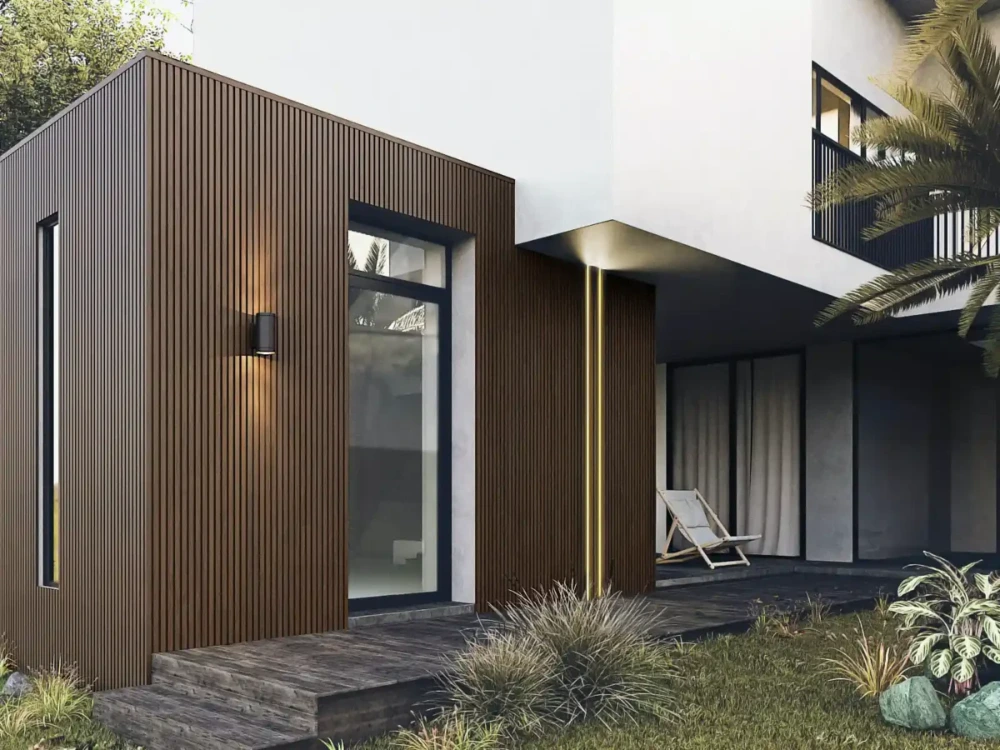
Durability & Maintenance
Drywall is relatively fragile. It cracks around joints, dents from minor impacts, and absorbs moisture unless sealed or specially treated (e.g., green board or cement board).
Wood Paneling is inherently stronger and more resilient to everyday wear. Modern panels are often pretreated to resist UV, warping, or scratches. When properly installed, they outlast drywall in high-traffic areas.
- Drywall needs frequent repainting and occasional patching
- Wood panels require dusting and occasional conditioning (for natural wood)
- For deep scratches, replace individual slats or boards instead of entire sections
Verdict: Paneling is better for durability, especially in entryways, halls, and family zones.
Acoustic & Thermal Performance
Drywall has minimal impact on acoustics. For soundproofing, it relies on insulation or double layers. Thermal efficiency depends on what’s behind it.
Wood Paneling, especially acoustic slat designs, absorbs and diffuses sound. It also adds a thermal layer, retaining heat better in colder months.
- Acoustic panels reduce echo and ambient noise in studios, offices, and dens
- Thermal benefits contribute to energy efficiency in well-sealed spaces
- 3D panels enhance performance while adding depth to the design
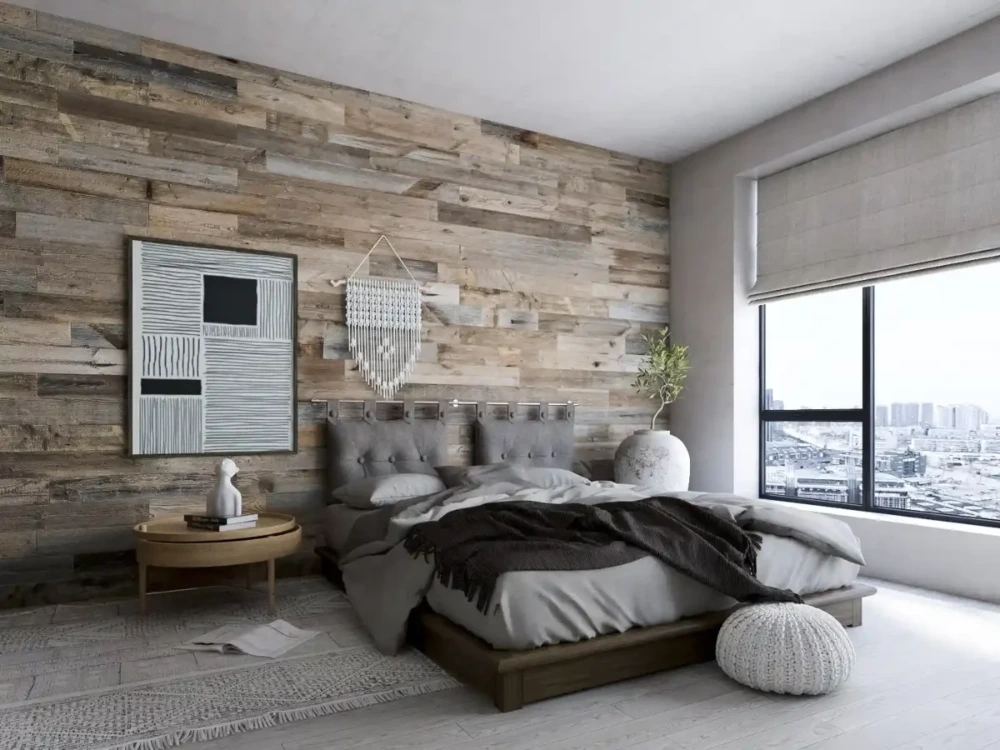
Verdict: Wood paneling provides superior sound control and thermal comfort, ideal for modern multi-use rooms.
Which Is Right For Your Space?
Deciding between wood paneling vs drywall depends on the space and the intention behind your remodel.
| Room | Preferred Finish | Reason |
|---|---|---|
| Living Room | Wood Paneling or Drywall | Paneling adds ambiance; drywall is paintable |
| Bedroom | Wood Paneling (accent) | Paneling provides warmth and a restful vibe |
| Basement | Moisture-treated Paneling or Green Drywall | Handles humidity with style |
| Bathroom | Sealed Wood Panels or Cement Board Drywall | Needs moisture resistance |
| Home Office | Acoustic Slat Paneling | Sound control + visual focus |
| Kitchen Backsplash | Wood Paneling (sealed) | Texture without tiles; wipeable if treated |
| Entry/Hallway | Wood Paneling | High-traffic resilience and visual impact |
| Exterior Features | Exterior-Rated Wood Panels | Weather-treated and built for outdoor use |
Expert Recommendation
If you’re deciding between wood paneling vs drywall, consider your project scope, budget, and overall design vision:
- Choose drywall when you need a smooth, cost-effective surface ready for paint or wallpaper. It’s ideal for large areas where flexibility is more important than impact.
- Choose wood paneling when style, acoustics, or quick transformation is the goal. It’s a better fit for accent walls, home studios, and high-touch spaces that benefit from texture and durability.
Each has its strengths, and in many homes, a combination of wood paneling vs drywall delivers the best results.
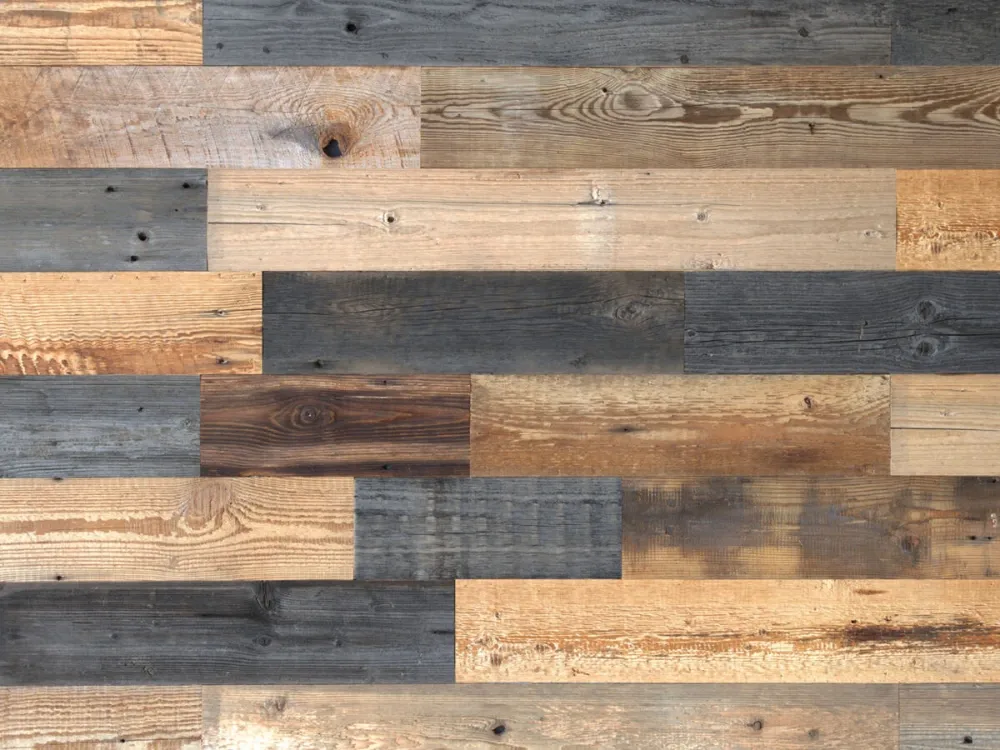
Conclusion
For homeowners looking to transform their walls with more than just a coat of paint, wood paneling vs drywall offers unmatched design impact and practicality. At Woody Walls, you’ll find premium-quality paneling options built for both beauty and performance. From acoustic slat panels to peel-and-stick designs and even exterior-ready styles, Woody Walls delivers a product line that simplifies DIY upgrades while elevating your space.
Explore our collection to find the wall solution that brings your vision to life, whether you’re adding character to a bedroom, warmth to a living room, or functionality to an office.

